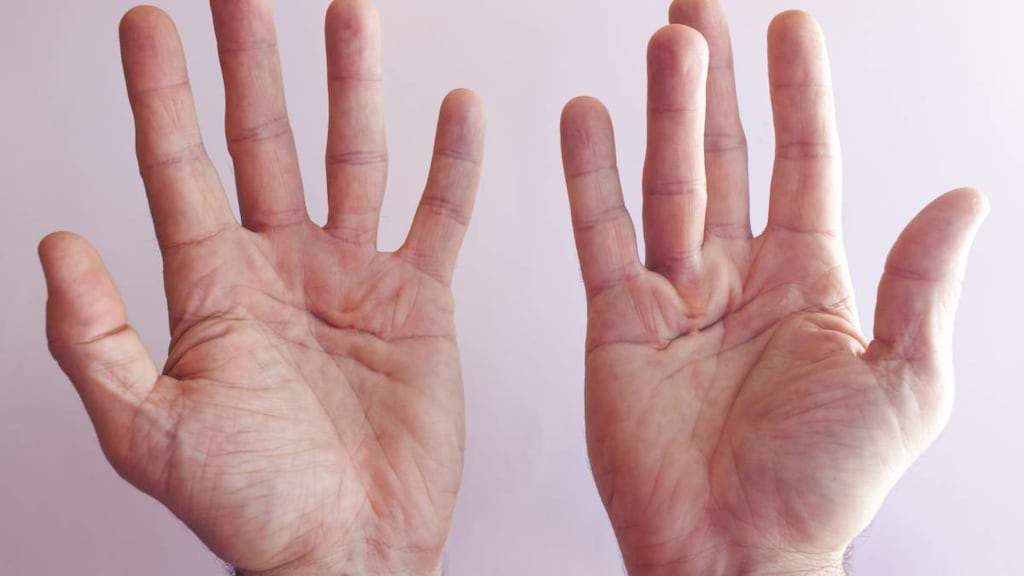
What is dupuytren's contracture?
Dupuytren's contracture is a type of hand deformity that causes one or more fingers in the hand to permanently bend inward. It typically progresses slowly over several years. Dupuytren's contracture is a result of Dupuytren's disease.
What causes dupuytren's contracture?
Under the skin on our palm lies a layer of fibrous tissue, known as the fascia, which helps to anchor and stabilize the skin. Without the fascia, the skin on our palm would be as loose and movable as the skin on the back of our palm.
Dupuytren's disease is a condition that causes the fascia to slowly thicken and eventually tighten. Knots of tissue can form under the skin which progress into a thick cord that can pull one or more fingers into a bent and inward position – usually, the two fingers furthest from the thumb are affected (the ring and little finger).
Because the affected fingers are unable to be straightened completely, people with Dupuytren's Contracture can find it difficult to perform everyday activities, such as holding onto objects, putting on gloves, or shaking hands.
Experts aren’t sure exactly what causes some people to develop Dupuytren's disease and not others, but genetics seems to play a major role.
Other factors that may increase risk include:
- Male gender
- Older age
- Injury, an open wound, or surgery to the hand
- Northern European (English, Irish, Scottish, French, or Dutch) or Scandinavian (Swedish, Norwegian, or Finnish) ancestry
- Excessive alcohol use
- Some medical conditions, such as diabetes or seizure disorders
What are the symptoms of dupuytren's contracture?
In many people, the first symptoms of Dupuytren's disease are the appearance of lumps or nodules under the skin in the palm. These initially may feel tender; however, with time the tenderness usually goes away. Pitting on the skin’s surface may also occur as the affected fascia pulls on the overlying skin.
Other symptoms depend on the progression of the disease and the development of Dupuytren's contracture, and may include:
- An inability to fully extend the ring finger
- The development of thick cords in the palm. These may look like tendons, but they aren’t, they are just lumps of fibrous tissue that restrict the fingers from straightening or spreading apart
- The little finger (pinky) starts to also contract inward
- The thumb also bends inwards
- Symptoms progress slowly, usually over several years
Some people with Dupuytren's disease may develop thickened tissue on the feet (Ledderhose disease) or penis (Peyronie's disease).
How is dupuytren's contracture treated?
Treatment is best attempted when it becomes difficult to straighten the fingers. Waiting any longer makes it less likely that a full correction of finger movement is achieved.
Although there is no cure for Dupuytren's contracture, treatments can restore finger motion and may include:
- Nonsurgical treatment, such as corticosteroid injections or splinting; however, the effectiveness of both these varies and neither prevents progression
- Surgery – this involves disrupting or removing the fibrous cords. This can cause substantial gains in hand function; however, the healing tissues still have the same potential to develop cords in the future. A fasciotomy or subtotal palmar fasciectomy is the most common type of surgery performed in people with Dupuytren's contracture




